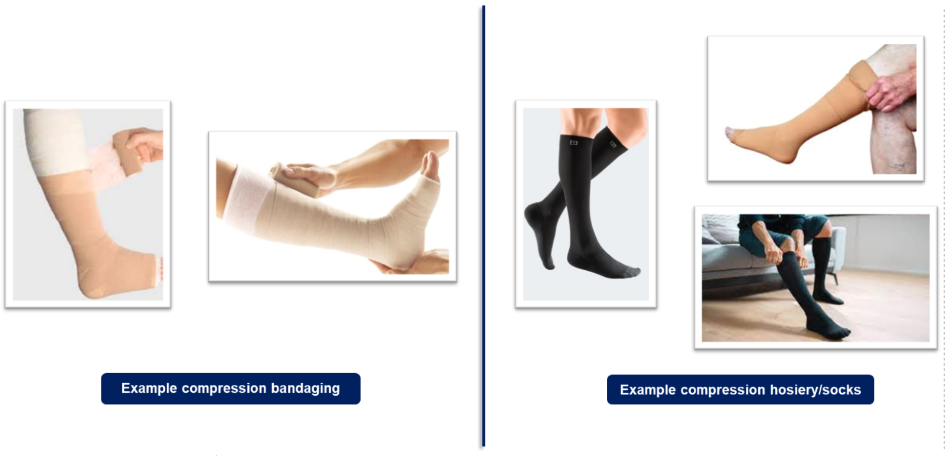Project Summary
What is the problem?
Skin cancers are common and the number of people who are developing them is increasing. They are usually split into two groups: melanomas are less common but more serious and keratinocyte skin cancers are more common but less serious. Keratinocyte skin cancers can occur anywhere on the body. Most need to be cut out.
Keratinocyte skin cancers that develop on the leg often cannot be closed with stitches and the wounds are left to heal by themselves (known as secondary intention wound healing). When left open, they can take several months to heal and can occasionally develop complications such as infections.
What are we trying to find out?
This project is trying to find out if compression therapy reduces the time it takes for wounds to heal by themselves after surgical removal of a keratinocyte skin cancer on the lower leg.
What is compression therapy?
Compression therapy is the use of firm bandages, stockings or socks applied to the lower leg. It is usually applied by a healthcare professional but may be applied by the patient or their carer. It is used in the NHS to treat wounds on the lower leg that are covered with dressings and healing by secondary intention. Examples of compression therapy are shown below:

Compression therapy takes about 5-10 minutes to apply. How frequently the therapy is renewed will depend on the which bandages or hosiery are used and how often dressings are changed. The choice of type will depend on which ones are available locally, who is going to apply the treatment and patient lifestyle. It is simple and cheap and routinely used to help heal venous leg ulcers but is less often used for surgical wounds.
What will we do?
Standard care that patients receive after removal of keratinocyte skin cancers includes wound dressings, advice about skin care and what activities they can carry out, as well as wound checks with a nurse or doctor. We will compare best standard care alone to best standard care with compression therapy.
We will study 396 patients from approximately 20 hospitals, who have had surgical removal of a keratinocyte skin cancer and have a wound which is allowed to heal by itself. Patients will have a 1 in 2 (50%) chance of receiving best standard care or best standard care with compression therapy.

Who are we?
We are a team with a track record in this type of research. Our team includes patient representatives, doctors, nurses, statisticians and health economists.
How will we tell people about what we found out?
We will send our results to healthcare professionals who are involved in the diagnoses and treatment of skin cancers on the lower leg. Presentations will be given at international conferences. Information will be published on our website and sent to patient support groups and social media.

